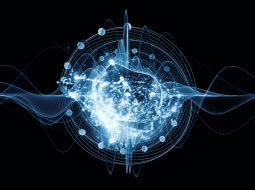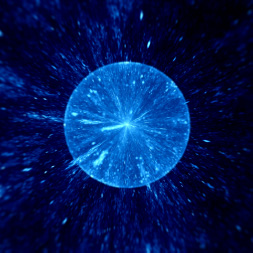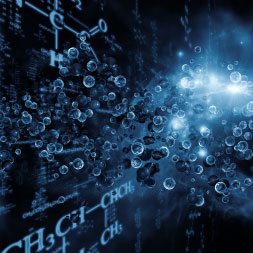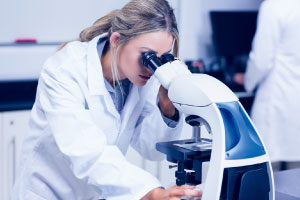Online courses directory (81)
This free online Physics course covers electronics, electric systems, magnets, sounds and transformers, and much more. It provides a comprehensive grounding in Physics and is ideal as a complement to regular classes, a study or revision aid, or as a resource for someone pursuing an interest in basic science.
This free online tutorial reviews motion, electric fields, spectra, energy transfers, force, acceleration, gravity Newton's Laws, projectiles, light, and much, much more. This comprehensive grounding in Physics is ideal as a complement to regular classes, as a study and revision aid, and as a resource for someone pursuing an interest in basic science.
Build your earth science vocabulary and learn about cycles of matter and types of sedimentary rocks through the Education Portal course Earth Science 101: Earth Science. Our series of video lessons and accompanying self-assessment quizzes can help you boost your scientific knowledge ahead of the Excelsior Earth Science exam . This course was designed by experienced educators and examines both science basics, like experimental design and systems of measurement, and more advanced topics, such as analysis of rock deformation and theories of continental drift.
Build your earth science vocabulary and learn about cycles of matter and types of sedimentary rocks through the Education Portal course Earth Science 101: Earth Science. Our series of video lessons and accompanying self-assessment quizzes can help you boost your scientific knowledge ahead of the Excelsior Earth Science exam . This course was designed by experienced educators and examines both science basics, like experimental design and systems of measurement, and more advanced topics, such as analysis of rock deformation and theories of continental drift.
In ASTR101, you will be introduced to our current understanding of the universe and how we have come to this understanding. We will start with the ancient Greeks and their belief that the universe was an orderly place capable of being understood. We will continue through history, as we acquired more information on the nature of the universe and our models of the universe changed to reflect this. This will take us through several different worldviews. As noted above, we will begin with the Greek worldview, which was characterized by the belief that the earth was the immovable center of the universe; this was known as the “geocentric” model. Although this worldview is wrong in many of its details, it was a very important first step. It explained the universe well enough that it lasted almost two thousand years. By 1600, this belief was beginning to be challenged by such people as Copernicus, Kepler, and Galileo; finally, it was completely done away with by the physics of Newton. By 1700, the…
The Big Bang theory has revolutionized our understanding of how the Universe was formed. It presents the scientific proof that shows how the Universe expanded from an infinitely small point around 13.7 billion years ago. In this free online course the learner will discover how scientists calculated when the Big Bang happened and how the Universe expanded after the Big Bang. The formation of the first atoms is discussed and how they are responsible for the cosmic background radiation that is found throughout the Universe. This free online course will be of great interest to students of astronomy and physics and to all learners who would like to learn more about the Big Bang theory and what it has to say about the formation of the Universe. <br />
Get a sense of the universe's enormity and discover the infinitesimal portion of history occupied by human existence with this astronomy course. Instructors show you how scientists go about studying such a vast expanse of time and space by explaining topics like wave-particle duality and spectra sequence. They can also help you take on an in-depth examination of astronomical objects that include protostellar disks, black holes, neutron stars, the Jovian planets and more with lessons on the following topics:
The power of electrical energy has been harnessed by engineers over the past century to transform society and how we live our lives. The phenomenon of electrical energy has been known since the 16th century, but it was only in the 19th century that rapid progress was made in the areas of electrical technology and electrical engineering. <br /><br />ALISON's free online electrical technology course introduces the basic laws of electricity, sources of electricity and electricity safety procedures. It also reviews electrical technology such as resistors, inductors, capacitors and series, and parallel circuits. <br /><br />ALISON's free online electrical technology course will be of great interest to all learners who would like to learn the basics of electricity and how electrical technology works to bring all the benefits of modern living into our lives.<br />
Matter exists in four states - solid, liquid, gas and plasma and it will change state depending on the temperature and pressure applied to the matter. In this free online chemistry course about states of matter you will learn about the characteristics of each of the four states and the amount of energy that can be added to or taken from a substance before it starts to change state. As all substances change state at different temperatures and pressures you will learn how to use phase change diagrams to plot the energy and pressure levels, the triple point, critical temperature, boiling and melting points associated with different substances. You will also learn in a step by step manner how to calculate the change in energy needed to move a substance along the state of matter spectrum. This free online chemistry course will be of great interest to all students who wish to pursue a career in any of the sciences such as chemistry, physics, biology or geology, or the individual learner who simply wants to learn and understand what is happening when matter changes from solid to liquid to gas.<br />
Lecture Series on Classical Physics by Prof.V.Balakrishnan, Department of Physics, IIT Madras.
Videos attempting to grasp a little bit about our Universe (many of the topics associated with "Big History"). Scale of Earth and Sun. Scale of Solar System. Scale of Distance to Closest Stars. Scale of the Galaxy. Intergalactic Scale. Hubble Image of Galaxies. Big Bang Introduction. Radius of Observable Universe. (Correction) Radius of Observable Universe. Red Shift. Cosmic Background Radiation. Cosmic Background Radiation 2. Cosmological Time Scale 1. Cosmological Time Scale 2. Four Fundamental Forces. Birth of Stars. Becoming a Red Giant. White and Black Dwarfs. A Universe Smaller than the Observable. Star Field and Nebula Images. Parallax in Observing Stars. Stellar Parallax. Stellar Distance Using Parallax. Stellar Parallax Clarification. Parsec Definition. Hubble's Law. Lifecycle of Massive Stars. Supernova (Supernovae). Supernova clarification. Black Holes. Cepheid Variables 1. Why Cepheids Pulsate. Why Gravity Gets So Strong Near Dense Objects. Supermassive Black Holes. Quasars. Quasar Correction. Galactic Collisions. Earth Formation. Beginnings of Life. Ozone Layer and Eukaryotes Show Up in the Proterozoic Eon. Biodiversity Flourishes in Phanerozoic Eon. First living things on land clarification. Plate Tectonics-- Difference between crust and lithosphere. Structure of the Earth. Plate Tectonics -- Evidence of plate movement. Plate Tectonics -- Geological Features of Divergent Plate Boundaries. Plate Tectonics-- Geological features of Convergent Plate Boundaries. Plates Moving Due to Convection in Mantle. Hawaiian Islands Formation. Compositional and Mechanical Layers of the Earth. Seismic Waves. Why S-Waves Only Travel in Solids. Refraction of Seismic Waves. The Mohorovicic Seismic Discontinuity. How we know about the Earth's core. Pangaea. Scale of the Large. Scale of the Small. Detectable Civilizations in our Galaxy 1. Detectable Civilizations in our Galaxy 2. Detectable Civilizations in our Galaxy 3. Detectable Civilizations in our Galaxy 4. Detectable Civilizations in our Galaxy 5. Human Evolution Overview. Understanding Calendar Notation. Correction Calendar Notation. Development of Agriculture and Writing. Introduction to Light. Seasons Aren't Dictated by Closeness to Sun. How Earth's Tilt Causes Seasons. Milankovitch Cycles Precession and Obliquity. Are Southern Hemisphere Seasons More Severe?. Precession Causing Perihelion to Happen Later. What Causes Precession and Other Orbital Changes. Apsidal Precession (Perihelion Precession) and Milankovitch Cycles. Firestick Farming. Carbon 14 Dating 1. Carbon 14 Dating 2. Potassium-Argon (K-Ar) Dating. K-Ar Dating Calculation. Chronometric Revolution. Collective Learning. Land Productivity Limiting Human Population. Energy Inputs for Tilling a Hectare of Land. Random Predictions for 2060.
Things in our universe can be unimaginably large and small. In this topic, we'll try to imagine the unimaginable!. Scale of the Large. Scale of the Small. Introduction to Light. Four Fundamental Forces. Scale of Earth and Sun. Scale of Solar System. Scale of Distance to Closest Stars. Scale of the Galaxy. Intergalactic Scale. Hubble Image of Galaxies. Cosmological Time Scale 1. Cosmological Time Scale 2. Big Bang Introduction. Radius of Observable Universe. (Correction) Radius of Observable Universe. Red Shift. Cosmic Background Radiation. Cosmic Background Radiation 2. Hubble's Law. A Universe Smaller than the Observable. Scale of the Large. Scale of the Small. Introduction to Light. Four Fundamental Forces. Scale of Earth and Sun. Scale of Solar System. Scale of Distance to Closest Stars. Scale of the Galaxy. Intergalactic Scale. Hubble Image of Galaxies. Cosmological Time Scale 1. Cosmological Time Scale 2. Big Bang Introduction. Radius of Observable Universe. (Correction) Radius of Observable Universe. Red Shift. Cosmic Background Radiation. Cosmic Background Radiation 2. Hubble's Law. A Universe Smaller than the Observable.
Our universe is defined by stars. This topic explores how they came to be and where they end up. This includes a discussion of black holes and galaxies. Birth of Stars. Accreting mass due to gravity simulation. Challenge: Modeling Accretion Disks. Becoming a Red Giant. White and Black Dwarfs. Star Field and Nebula Images. Lifecycle of Massive Stars. Supernova (Supernovae). Supernova clarification. Black Holes. Supermassive Black Holes. Quasars. Quasar Correction. Galactic Collisions. Parallax in Observing Stars. Stellar Parallax. Stellar Distance Using Parallax. Stellar Parallax Clarification. Parsec Definition. Cepheid Variables 1. Why Cepheids Pulsate. Why Gravity Gets So Strong Near Dense Objects. Birth of Stars. Accreting mass due to gravity simulation. Challenge: Modeling Accretion Disks. Becoming a Red Giant. White and Black Dwarfs. Star Field and Nebula Images. Lifecycle of Massive Stars. Supernova (Supernovae). Supernova clarification. Black Holes. Supermassive Black Holes. Quasars. Quasar Correction. Galactic Collisions. Parallax in Observing Stars. Stellar Parallax. Stellar Distance Using Parallax. Stellar Parallax Clarification. Parsec Definition. Cepheid Variables 1. Why Cepheids Pulsate. Why Gravity Gets So Strong Near Dense Objects.
The free online Diploma in General Science course from ALISON is ideal for anyone who wants to gain a comprehensive knowledge and understanding of key subjects in biology, chemistry and physics. In biology you will covers subjects such as cell theory, genetics and evolution; in chemistry you will cover subjects such as atoms, molecules and the periodic table; and in physics you will cover subjects such as magnetism, electricity and sound. This Diploma course will be of great interest to those who want to further improve their knowledge and understanding of general science, and will greatly enhance your career prospects.<br />
Zinc Copper cell (reduction-oxidation). How to Measure?. Battery Meter (Galvanometer). How Many Turns?. Electrolyte Test (pure water vs. vinegar). Reverse Electrodes (polarity). Electrolyte (strong acid test). Electrolyte (salt test). Electrode (distance test). Electrolyte (temperature test). Electrode (surface area test). Standard Cell. How much electrolyte does a single cell need?. What's Next?.
Discovery of Electromagnetism. Experiment: Electromangetism. Electromagnetic Field (above vs. below). Electromagnetic Field (forward vs. reverse). Electromagnetic Field (loop). Right-Hand Rule. Battery Meter (Galvanometer).
Magnet near Compass. Tracing a Magnetic Field. Tracing a magnetic field. Discovery of Magnetic Fields. Magnet and iron filings. Magnetic field. 3D magnet with field. Magnetic Permeability. Increase Strength of Magnet. What's Next?.
Discovery of Magnetism. Compass: which way is north?. Floating Magnet. Compass Build (stroke direction). Compass Build (magnet orientation). Neutralize a Compass. Compass Interactions. Magnetising materials. What's Next?.
Series Load. Pencil Resistor. Variable Resistor (Pencil). Listen to Variable Resistance. What's Next?.
Spinning Compass. Build your own motor. What's Next.
Trusted paper writing service WriteMyPaper.Today will write the papers of any difficulty.













